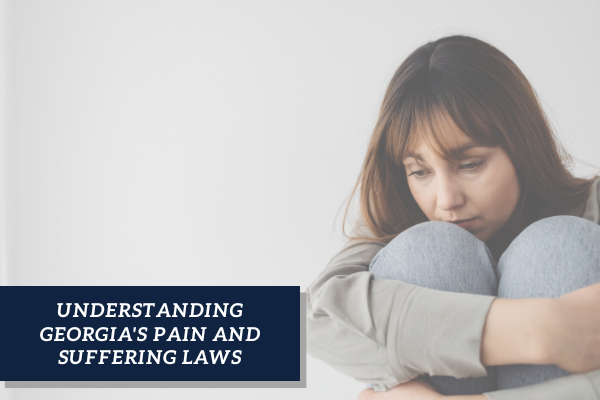
In Georgia, those hurt by others can seek compensation for medical expenses, lost earnings, and other losses they suffered as a result – including something called “pain and suffering.” But what exactly is pain and suffering, and how is it quantified?
What Is “Pain and Suffering?”
Georgia courts acknowledge that injuries have more than just financial consequences that victims deserve to be compensated for. “Pain and suffering” is a broadly defined term that includes any physical and psychological harm you experience because of your injury. While nothing can truly make up for the shock and trauma you experienced, the time you had to spend recovering, or the disruption to your daily life, pain and suffering damages are meant to compensate you financially for those intangible losses.
Types of Injury Claims Commonly Associated with Pain and Suffering
Pain and suffering damages cover effects from your injuries such as:
- Physical pain
- Loss of enjoyment of life
- Fear
- Depression
- Anxiety
- Insomnia
- Humiliation
- Social disorders
- Mood swings
- Anger
- Shock
- Post-traumatic stress disorder (PTSD)
Recovering the full compensation you’re owed for such losses can be difficult, since “suffering” is subjective. It will be up to an insurer or a court to determine how much you deserve. That’s why it is important to have an experienced injury attorney at your side throughout the legal process. Yourpersonal injury lawyer can accurately describe the level of pain and suffering you endured and demand that you be compensated accordingly.
Can You Sue for Pain and Suffering in Georgia?
If you’ve been harmed by someone’s actions or inaction, you can demand that they compensate you for your losses. Under GA Code § 51-12-4, Georgia deems pain and suffering to be a compensable loss. That means you can sue for pain and suffering in Georgia.
How Are Damages for Pain and Suffering Calculated in Georgia?
Georgia has two widely used processes for determining pain and suffering damages: the multiplier method and the per diem method.
The Multiplier Method
The most common method to estimate damages for pain and suffering is the multiplier method. The court first adds up all of the financial consequences of the accident to arrive at your special damages, such as your medical expenses, lost wages, and repair bills.
A multiplier — usually between 1.5 and 5 — is then chosen based on the severity of your injuries and the amount of time it takes you to recover. The more serious your injuries are, the higher the multiplier will be. Your total damages are then calculated by multiplying your special damages by the multiplier. For example, if you had $10,000 in special damages and a multiplier of 3, your total damages would be $30,000.
The Per Diem Method
Another standard method used to calculate pain and suffering damages is the per diem method. In this approach, the daily cost of your pain and suffering is assigned a value and then multiplied by the number of days it’s expected to last.
Assigning a specific value to the daily cost of pain and suffering is difficult. But one way is to use the cost of missing a day’s pay at work. So if the daily cost of your pain and suffering is $100 and it lasts for 180 days, you could receive $18,000 in pain and suffering damages.
Contact the Georgia Personal Injury Lawyers at Brauns Law Accident Injury Lawyers, PC
If you were injured in an accident someone else caused, contact a Duluth personal injury attorney at Brauns Law Accident Injury Lawyers, PC. We can help you pursue compensation for your economic and non-economic losses, including pain and suffering. All initial legal consultations are free, and you don’t pay anything until we settle your claim.














